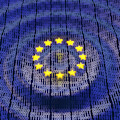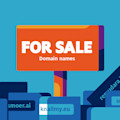In the Netherlands, the ICT sector and government are joining forces to tackle child pornography on the internet. As part of the concerted crackdown, the Notice and Take Down Code is changing: signatories to the code will immediately take down any content identified as child pornography by the On-line Child Abuse Expertise Bureau. OCAEC Chair Arda Gerkens explains more.

The On-line Child Abuse Expertise Bureau (OCAEC) is the new name for the Reporting Hotline for Internet Child Pornography. "We started in 1995," recalls Gerkens. "At that stage, it was quite literally one person sitting at a computer in an attic. Things have gradually moved on since then. We've increased our workforce and our scope of activity. A few years ago, we made the organisation more professional and we changed our name." Throughout its development, SIDN has supported the organisation. "Our relationship with SIDN has been fantastic," Gerkens continues. "As well as being our biggest sponsor, they have always been ready to provide help and advice. They take their social responsibilities very seriously. And I'm very pleased about that."
Difficult work
Anyone who comes across child pornography on the internet can report it to OCAEC. They assess images, report abuse to the police and ask providers to take down offending content. "It's not easy to look at the material that gets reported to us," says Gerkens. "More than four hours a day becomes unbearable. And, once you've been doing it a few years, you need to stop. Otherwise it poisons your whole view of humanity."
On-line child abuse finally receives more attention
The number of URLs checked out by OCAEC has been rising for years. In 2016, it was 100,000, in 2017 about 155,000 and this year it'll be significantly higher again. "For years now, we've been calling for this problem to be given more attention," stresses Gerkens. "So we're very pleased that Ferdinand Grapperhaus is making this a priority. Since becoming Minister of Justice and Security, he's displayed a lot of energy and floated a lot of new ideas." That has resulted in a programme called Children Safe On Internet, a collaborative initiative by the government, the business community and various NGOs.
Extension to the Notice and Take Down Code
As part of the Children Safe On Internet programme, the Notice and Take Down Code is being extended. The code makes it possible to get clearly unlawful material taken down quickly. First, the website's administrator is asked to remove the content. If they don't, the hoster is called on to intervene. If that doesn't yield a result, the registrar is approached. Finally, SIDN can be asked to disable the domain name in the rare cases where the material comes under .nl.
However, action can be taken only if the material is 'clearly unlawful', and that is sometimes hard to demonstrate. Fortunately, because viewing child pornography is a criminal offence and ISPs want to stay the right side of the law, nearly all ISPs in the Netherlands have traditionally relied on the OCAEC to tell them what needs taking down. That informal arrangement is now being formalised, Gerkens explains. "An addendum has been attached to the code. All signatories will now rely on our judgement. If we say that an image is child pornography, anyone who follows the code will have to take it down. That places a significant responsibility on our shoulders, which we take very seriously."
Managing expectations
Before revising the Code, the Notice and Take Down Working Group discussed the matter at length, Gerkens continues. "The Group is very ably chaired by SIDN's Maarten Simon. He knows the industry well and is very good at managing expectations. Not everything that's desirable is workable. I'm very pleased with the addendum the Group settled on."
Bad hosters
Following the Notice and Take Down Code is voluntary. And, unfortunately, some hosters have not signed up. "You get 'bad hosters' that allow their server capacity to be used for all kinds of illegal content, such as advertising for drugs or weapons," says Gerkens. "Their business model is based on such content. At the moment, there's not much we can do to make them abide by the Code. However, the minister is looking at countermeasures based on administrative law. In the future, bad hosters might be facing hefty fines if they don't take content down. That's likely to make them think twice."
Technical measures
Along with revision of the Notice and Take Down Code, a number of technical developments are set to make tackling child pornography easier. For example, there is OCAEC's Hashdata Project. "The police have given us access to a database of hashes, each of which is a sort of fingerprint of a photo or video," explains Gerkens. "We share the hashes with businesses, enabling them to check whether they have any child pornography on their websites, without actually viewing the material." While fearing that internet child pornography will never be completely eliminated, Gerkens remains positive. "We may not be able to get rid of this material altogether, but we can make it much harder to distribute."


